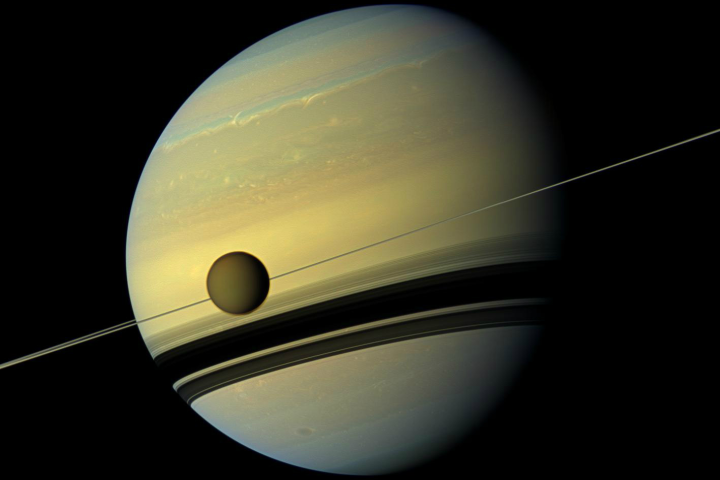
Oh and, maybe above all else, Titan is thought to be rich in complex organic compounds, making it a top prospect in the search for extraterrestrial life.
“Titan is a fascinating real-scale laboratory for those interested into the mechanisms that lead to the apparition of life,” Cyril Grima, a geophysical researcher at the University of Texas, told Digital Trends. “It is full of organic molecules that are synthesized into more complex macromolecules, some of which are known to be building blocks for life as we can observe on Earth.”
NASA and ESA’s Cassini–Huygens probe arrived at Titan back in 2004 and revealed massive lakes of liquid methane. Just over a decade later, NASA toyed with the idea of sending a submarine to the moon to study its depths.
That idea looks even more tempting now that Grima and his team have published a study showing that some of Titan’s seas are almost completely calm.
“There is the science motivation to confirm the Titan’s seas are very flat as suggested by previous studies,” Grima said. “That way it could help to improve climate models and also to bring additional information for helping current concepts in their design for Titan’s landers.”
Grima and his team focused on measuring wave-height on Titan’s three largest bodies of water: Punga mare, Ligeia Mare, and Kraken Mare, where NASA proposed to send the submarine probe. The researchers analyzed data that was collected by Cassini during the early summer and found that waves were never higher than four inches and never longer than eight inches. They were often under a half inch high.
“So it tends to show that small waves are the most common during this season,” Grima said. This was a surprise. The researchers expected this to be the windiest time of the year, so they anticipated to spot some bigger waves.
There are some caveats, Grima admits: “It is important to note that our measurement technique, together with the instrument capabilities, is sensitive to the global … waves that populate the seas. So we cannot rule out that smaller patches of higher waves, not sustained over long period of time, might exist.”
Either way, the study suggests Titan might welcome a probe with a relatively gentle landing, into a sea whose depths could be teeming with life.


